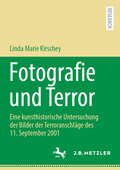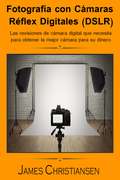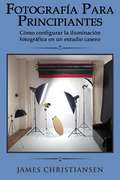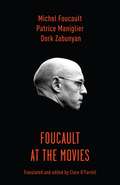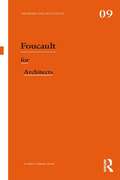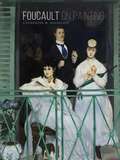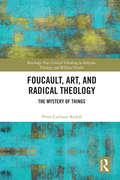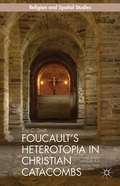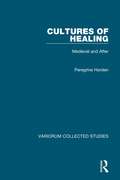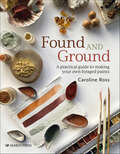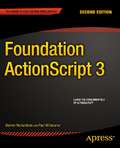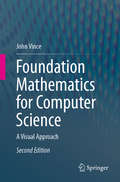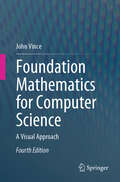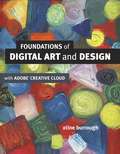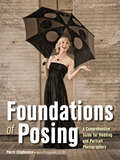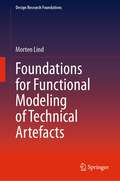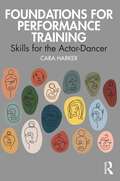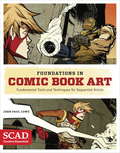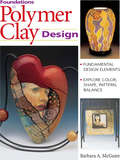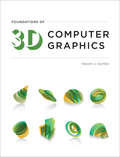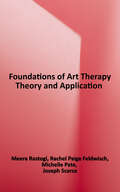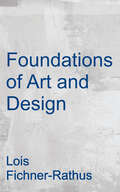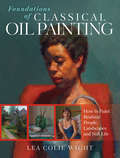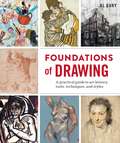- Table View
- List View
Fotografie und Terror: Eine kunsthistorische Untersuchung der Bilder der Terroranschläge des 11. September 2001
by Linda Marie KirscheyBei Fotografien herausragender historischer Ereignisse stellen sich immer bestimmte Bilder heraus, die vornehmlich publiziert und dadurch kollektiv erinnert werden können. Dies verdeutlicht auch die fotografische Präsentation des 11. September. Wenngleich im wissenschaftlichen Diskurs der Terroranschläge von einem Bildereignis und dem meistfotografierten Ereignis der Gegenwart gesprochen wird, so sind es die brennenden Türme, die zum Sinnbild von 9/11 geworden sind. Der öffentliche Bilderkanon an den Folgetagen der Anschläge ist mit stets denselben, symbolisch sortierten Bildern gespeist. Folglich stellt sich die Frage nach alternativen Strategien der Sichtbarkeit, die sich hinter der sogenannten Bilderflut des Ereignisses verbergen. Denn die öffentliche Visualisierung der Terroranschläge verortet sich innerhalb eines zunächst widersprüchlich erscheinenden Spannungsfeldes aus einer Bilderflut repetitiver Motive und einer gleichzeitigen Bilderarmut der Motivvielfalt. Aus kunsthistorischer Perspektive deckt die Studie ein anderes Verständnis für die Fotografie des Terrors auf. Spezifische Topoi differenzieren das fotografische Gesicht dieses Ereignisses aus, um das Bild des Terrors motivisch zu erweitern.
Fotografía Réflex Digital (DSLR): Los análisis de cámaras digitales que necesitas para obtener la mejor cámara por tu dinero
by James Christiansen¿Confundido ante la vertiginosa variedad de cámaras digitales disponibles? ¿Estás buscando revisiones de cámaras digitales sólidas y de fiar? No busques más, pues no sólo cubro los mejores recursos de fotografía réflex digital disponibles, sino también lo que necesitas hoy en día para empezar a tomar grandes fotos digitales. En este libro descubrirás: 1. Qué es una cámara réflex digital (DSLR) y cómo funciona. 2. Revisiones exhaustivas sobre las mejores cámaras DSLR para principiantes. 3. Revisiones exhaustivas sobre las mejores cámaras DSLR intermedias. 4. Revisiones exhaustivas sobre las mejores cámaras DSLR avanzadas. 5. Los consejos y trucos que necesitas para una excelente fotografía réflex digital. Deja de perder el tiempo tratando de averiguar qué cámara digital comprar - ¡deja que mi guía te muestre cuál es la mejor cámara réflex digital para tu presupuesto!
Fotografía para principiantes: Cómo configurar la iluminación fotográfica en un estudio casero
by Laura Ballesteros Luján James Christiansen¿Eres un fotógrafo principiante y te preguntas cómo configurar la iluminación fotográfica? ¿Necesitas saber cómo organizar tu kit de iluminación fotográfica? No hace falta que busques más, ya que este eBook de fotografía para principiantes te explica exactamente cómo configurar la iluminación fotográfica en un estudio casero. Es difícil saber qué comprar cuando eres un fotógrafo principiante. Todo el mundo sabe qué luz hace que una foto triunfe o fracase, pero ¿cómo tienes que configurar tu propio estudio casero? Este libro responde a esas preguntas. En este libro aprenderás a: 1. Configurar tu estudio casero 2. Los diferentes tipos de iluminación y cómo elegir el mejor para tus fotografías 3. Cómo configurar los distintos componentes de la iluminación 4. Productos de iluminación recomendados 5. Consejos y trucos para obtener una iluminación fantástica ¿Necesitas más razones para comprar este libro? Te doy una más: Dono el 5% de los beneficios de las ventas de mis libros a Reading Is Fundamental, la organización sin fines de lucro más grande y respetada de América, destinada a la alfabetización infantil. No luches más intentando conseguir la iluminación perfecta. ¡Consigue este libro de fotografía para principiantes y aprende a configurar la iluminación de tu estudio casero!
Foucault at the Movies
by Patrice Maniglier Dork ZabunyanMichel Foucault’s work on film, although not extensive, compellingly illustrates the power of bringing his unique vision to bear on the subject and offers valuable insights into other aspects of his thought. Foucault at the Movies brings together all of Foucault’s commentary on film, some of it available for the first time in English, along with important contemporary analysis and further extensions of this work.Patrice Maniglier and Dork Zabunyan situate Foucault’s writings on film in the context of the rest of his work as well as within a broad historical and philosophical framework. They detail how Foucault’s work directly or indirectly inspired both film critics and directors in surprising ways and discuss his ideas in relation to significant movements within film theory and practice. The book includes film reviews and discussions by Foucault as well as his interviews with the prestigious film magazine Cahiers du cinéma and other journals. Also included are his dialogues with the noted French feminist writer Hélène Cixous and film directors Werner Schroeter and René Féret. Throughout, Foucault and those he is in conversation with reflect on the relationship of film to history, the body, power and politics, knowledge, sexuality, aesthetics, and institutions of internment. Foucault at the Movies makes all of Foucault’s writings on film available to an English-speaking audience in one volume and offers detailed, up-to-date commentary, inviting us to go to the movies with Foucault.
Foucault for Architects: Foucault For Architects (Thinkers for Architects)
by Gordana Fontana-GiustiFrom the mid-1960s onwards Michel Foucault has had a significant impact on diverse aspects of culture, knowledge and arts including architecture and its critical discourse. The implications for architecture have been wide-ranging. His archaeological and genealogical approaches to knowledge have transformed architectural history and theory, while his attitude to arts and aesthetics led to a renewed focus on the avant-garde. Prepared by an architect, this book offers an excellent entry point into the remarkable work of Michel Foucault, and provides a focused introduction suitable for architects, urban designers, and students of architecture. Foucault’s crucial juxtaposition of space, knowledge and power has unlocked novel spatial possibilities for thinking about design in architecture and urbanism. While the philosopher's ultimate attention on the issues of body and sexuality has defined our understanding of the possibilities and limits of human condition and its relation to architecture. The book concentrates on a number of historical and theoretical issues often addressed by Foucault that have been grouped under the themes of archaeology, enclosure, bodies, spatiality and aesthetics in order to examine and demonstrate their relevancy for architectural knowledge, its history and its practice.
Foucault on Painting
by Catherine M. SoussloffMichel Foucault had been concerned about painting and the meaning of the image from his earliest publications, yet this aspect of his thought is largely neglected within the disciplines of art history and aesthetic theory. In Foucault on Painting, Catherine M. Soussloff argues that Foucault&’s sustained engagement with European art history critically addresses present concerns about the mediated nature of the image in the digital age.Foucault&’s writing on painting covers four discrete periods in European art history (seventeenth-century southern Baroque, mid-nineteenth century French painting, Surrealism, and figurative painting in the 1960s and &‘70s) as well as five individual artists: Velázquez, Manet, Magritte, Paul Reyberolle, and Gérard Fromanger. As Soussloff reveals in this book, Foucault followed a French intellectual tradition dating back to the seventeenth century, which understands painting as a separate area of knowledge. Painting, a practice long considered silent in its operations and effects, afforded Foucault an ideal discipline to think about history and philosophy simultaneously. Using a comparative approach grounded in art history and aesthetics, Soussloff explores the meaning of painting for Foucault&’s philosophy, and for contemporary art theory, proposing a new relevance for a Foucauldian view of ethics and the pleasures and predicaments of contemporary existence.
Foucault, Art, and Radical Theology: The Mystery of Things (Routledge New Critical Thinking in Religion, Theology and Biblical Studies)
by Petra Carlsson RedellMichel Foucault wrote prolifically on many topics including, art, religion, and politics. He also eloquently articulated how power structures are formed and how they also might assist resistance and emancipation. This book uses the hermeneutical lens of Foucault’s writings on art to examine the performative, material, and political aspects of contemporary theology. The borderland between philosophy, theology, and art is explored through Foucault’s analyses of artists such as Diego Velázquez, Édouard Manet, René Magritte, Paul Rebeyrolle, and Gerard Fromanger. Here special focus is placed on performativity and materiality—or what the book terms the mystery of things. At successive junctures, the book discovers a postrepresentational critique of transcendence; an enigmatic material sacramentality; playful theopolitical accounts of the transformative force of stupidity and nonsense; and political imagery in motion enabling theological interpretations of contemporary collectives such as Pussy Riot and the Sisters of Perpetual Indulgence. In conversation with contemporary thinkers including Catherine Keller, Louise-Marie Chauvet, John Caputo, Daniel Barber, Mark C. Taylor, Jeffrey W. Robbins, and Mattias Martinson, the book outlines this source of inspiration for contemporary radical theology. This is a book with a fresh and original take on Foucault, art, and theology. As such, it will have great appeal to scholars and academics in theology, religion and the arts, the philosophy of religion, political philosophy, and aesthetics.
Foucault’s Heterotopia in Christian Catacombs
by Eric C. SmithRinging the city like pearls on a necklace and plunging beneath the earth into darkness, the Christian catacombs of Rome have inspired and captivated people for centuries. This book takes a new approach to the study of the catacombs, using spatial theory to understand the way the catacombs were constructed, decorated, and used. Relying on the theoretical work of Michel Foucault and Henri Lefebvre, this book moves beyond traditional forms of analysis to turn a new lens to the work of understanding these monuments of early Christianity. The location and form of the Callistus Catacomb, the art found inside, the texts referenced in that art, and the community practices performed and referenced deep underground form the heart of this innovative take on the grand burial sites of the early church.
Found Footage Horror Films: A Cognitive Approach (Routledge Advances in Film Studies)
by Peter TurnerThis book adopts a cognitive theoretical framework in order to address the mental processes that are elicited and triggered by found footage horror films. Through analysis of key films, the book explores the effects that the diegetic camera technique used in such films can have on the cognition of viewers. It further examines the way in which mediated realism is constructed in the films in order to attempt to make audiences either (mis)read the footage as non-fiction, or more commonly to imagine that the footage is non-fiction. Films studied include The Blair Witch Project, Rec, Paranormal Activity, Exhibit A, Cloverfield, Man Bites Dog, The Last Horror Movie, Noroi: The Curse, Autohead and Zero Day This book will be of key interest to Film Studies scholars with research interests in horror and genre studies, cognitive studies of the moving image, and those with interests in narration, realism and mimesis. It is an essential read for students undertaking courses with a focus on film theory, particularly those interested specifically in horror films and cognitive film theory.
Found and Ground: A Practical Guide to Making Your Own Foraged Paints
by Caroline Ross“How to forage colorful materials in a variety of locales . . . an enjoyable take on how artists can get in touch with the natural world.” —Publishers WeeklyForaging for pigments and creating paints from scratch is both life-affirming and fascinating, and this book teaches new skills while also introducing the reader to the land outside their door.Starting with a foreword by award-winning author and environmentalist Paul Kingsnorth, Found and Ground covers every aspect of making natural paints, from finding the raw materials to the techniques needed to refine it into a pigment. Suitable for the complete beginner as well as those with some experience in art, it will also appeal to those with experience in drawing and painting, but who until now have only used shop-bought materials to make their work.Found and Ground is the ideal reference book for artists and crafters wishing to move away from plastics (such as those found in acrylic paints), and use natural paints in their place. The book covers how to make a series of simple natural paints such as watercolor, gouache, tempera, and glair. It also includes innovative vegan “egg paint” alternatives.Aimed at a general readership, all specialist art terminology is clearly and simply explained, and all the techniques demonstrated through step-by-step instructions. The book will also give fresh ideas to those stuck in a rut with their use of watercolors, and introduce readers to try new “old ideas.” Most importantly, it will teach readers how to forage and gather successfully and safely.“Look to the included watercolor galleries of artist works for inspiration. Nature repurposed is nature enhanced.” —Booklist
Foundation ActionScript 3
by Darren Richardson Paul MilbourneActionScript 3 is a full-fledged programming language, with complete object-oriented capabilities, event handling, sound and video support, drawing capabilities, support for regular expressions, and much more. Whether you are just starting out on the road to computer programming and animation or an experienced developer who wants to learn a new language, you'll find all you need to know in Foundation ActionScript 3. Starting with the fundamentals, you'll learn how to add interactivity to your Flash movies by using ActionScript objects, manipulating sound and video, and harnessing the power of regular expressions and XML. The book concludes with two case studies to consolidate what you've learned and introduce some additional advanced techniques. You'll gain a solid understanding of the exciting world of ActionScript 3 and see how everything fits together, so you'll be able to build your own professional applications. The sensible layout of the book makes it easy to find information about specific techniques. It focuses on the essential skills that will enable you to get up and running quickly. With this book as your guide, you'll be creating killer Flash applications before you know it. What you'll learn Learn the fundamentals of ActionScript 3. Use ActionScript 3's object-oriented features Manipulate sound and video to produce exciting modern web applications Work with XML as your data source Who this book is for Whether you're completely new to ActionScript or you're coming from a previous version, Foundation ActionScript 3 will teach you all you need to know to get up and running with AS3 in no time. Table of Contents Getting Started with ActionScript 3 ActionScript 3 Fundamentals Objects and Classes Working with the Display Creating Vector Graphics with the Drawing API User Interaction and More with Events Working with Video Using Audio Working with Components Regular Expressions Using XML Case Study: Creating a Dynamic Image Viewer Getting Started with Flex Flex by Example
Foundation Mathematics for Computer Science: A Visual Approach
by John VinceIn this second edition of Foundation Mathematics for Computer Science, John Vince has reviewed and edited the original book and written new chapters on combinatorics, probability, modular arithmetic and complex numbers. These subjects complement the existing chapters on number systems, algebra, logic, trigonometry, coordinate systems, determinants, vectors, matrices, geometric matrix transforms, differential and integral calculus. During this journey, the author touches upon more esoteric topics such as quaternions, octonions, Grassmann algebra, Barrycentric coordinates, transfinite sets and prime numbers. John Vince describes a range of mathematical topics to provide a solid foundation for an undergraduate course in computer science, starting with a review of number systems and their relevance to digital computers, and finishing with differential and integral calculus. Readers will find that the author’s visual approach will greatly improve their understanding as to why certain mathematical structures exist, together with how they are used in real-world applications. This second edition includes new, full-colour illustrations to clarify the mathematical descriptions, and in some cases, equations are also coloured to reveal vital algebraic patterns. The numerous worked examples will help consolidate the understanding of abstract mathematical concepts. Whether you intend to pursue a career in programming, scientific visualisation, artificial intelligence, systems design, or real-time computing, you should find the author’s literary style refreshingly lucid and engaging, and prepare you for more advanced texts.
Foundation Mathematics for Computer Science: A Visual Approach
by John VinceIn this book, John Vince has reviewed and edited the third edition and added chapters on statistics, Georg Riemann’s hypothesis, eigen vectors, curves, analytic geometry and Fourier analysis. These subjects complement the existing chapters on visual mathematics, numbers, algebra, logic, combinatorics, probability, modular arithmetic, trigonometry, coordinate systems, determinants, vectors, complex numbers, matrices, geometric matrix transforms, differential and integral calculus. During this journey, the author touches upon more esoteric topics such as quaternions, octonions, Grassmann algebra, barycentric coordinates, transfinite sets and prime numbers. John Vince describes a range of mathematical topics that provide a solid foundation for an undergraduate course in computer science, starting with a review of number systems and their relevance to digital computers and finishing with calculating area and volume using calculus. Readers will find that the author’s visual approach should greatly improve their understanding as to why certain mathematical structures exist, together with how they are used in real-world applications. This book includes new, full-colour illustrations to clarify the mathematical descriptions, and in some cases, equations are also coloured to reveal vital algebraic patterns. The numerous worked examples will help consolidate the understanding of abstract mathematical concepts. Whether you intend to pursue a career in programming, scientific visualization, artificial intelligence, systems design or real-time computing, you should find the author’s literary style refreshingly lucid and engaging and prepare you for more advanced texts.
Foundations Of Digital Art And Design With The Adobe Creative Cloud
by Xtine BurroughAll students of digital design and production—whether learning in a classroom or on their own—need to understand the basic principles of design. These principles are often excluded from books that teach software. Foundations of Digital Art and Design reinvigorates software training by integrating design exercises into tutorials fusing design fundamentals and core Adobe Creative Cloud skills. The result is a comprehensive design learning experience. <p><p> This book is organized into six sections that focus on vector art, photography, image manipulation, typography, web design, and effective habits. Design topics and principles include: Bits, Dots, Lines, Shapes, Rule of Thirds, Zone System, Color Models, Collage, Appropriation, Gestalt, The Bauhaus Basic Course Approach, The Grid, Remix, Automation, and Revision.
Foundations Of Posing: A Comprehensive Guide For Wedding And Portrait Photographers
by Pierre StephensonPhotographers must have a clear understanding of how the human body, from head to toe, should be posed and adjusted in order to look good--and natural--to the camera. Learning effective strategies to flatter the face, arms and legs, torso, and hands and feet will allow us not only to flatter our subjects but also effectively tell the subject’s story. Regardless of your photographic style, the tips and techniques outlined in this book will allow you to better control what the camera sees and the mood or message you want to convey. Whether you are a portrait or lifestyle photographer, photojournalist, fashion or commercial photographer, this book is designed to help you learn skills that you can apply to your specific style and method of shooting. Stephenson maintains that you should first identify the intent of your portrait before you begin to analyze the way in which you will pose your subject or subjects. How will the client use the image? Does he or she need a business portrait, which will require an air of authority and confidence, with a traditional vibe? Is the couple who booked the session deeply in love, and would a pose that speaks to their emotional closeness be appropriate? The author then moves into a discussion on body language. The way that an individual holds himself says much about his mind-set, mood, and motivations. Image viewers subconsciously read the cues that the subject’s body conveys. It is important to ensure that the body language that is summoned through posing suits the mood/theme /intent of the portrait. There are traditions of posing that have been in play in the visual arts for eons. Many photographers fall into using the same pose for every subject. When this happens, all of the images that leave the studio begin to look the same. This can have dire consequences when it comes to the public perception of the photographer’s work--and can squelch the joy photographers feel when creating. Stephenson offers simple approaches to flattering every body part when photographing individual clients and also teaches readers how to create artful images of couples and groups, as in multi-subject portraits, each individual must look great and relate logically and aesthetically to other subjects in the frame. With tips for posing the young and old, males and females, singles, couples, and groups in both indoor and locations--and in reclining, seated, and standing poses, from full-length to close-up, this book will walk you through all aspects of posing and balance with examples and easy to follow instructions. It’s time to stop guessing and learn the art and science of posing.
Foundations for Functional Modeling of Technical Artefacts (Design Research Foundations)
by Morten LindThis monograph provides a new framework for modelling goals and functions of control systems. It demonstrates how to use means-end concepts and various aspects of action to describe the relations between the structure, dispositions, functions, and goals of technical systems and with human action. The author developed this approach as part of his research on Multilevel Flow Modelling (MFM). He based the framework on concepts of action and means-end analysis drawing on existing theories from several areas of study, including philosophical logic, semiotics, and phenomenological approaches to social science. Here, he applies it to three modeling situations related to the interaction of technical artefacts and humans. One involves the relation between designer and artefact, another the relation between technical artefact and its user, and the third the relation between a natural object and its user. All three are relevant for modelling complex automated processes interacting with human operators. The book also discusses challenges when applying the foundations for modelling of technical artefacts. Overall, it provides a cross disciplinary integration of several fields of knowledge. These disciplines include intelligent process control, human machine interaction, and process and automation design. As a result, researchers and graduate students in computer science, engineering, and philosophy of technology will find it a valuable resource.
Foundations for Performance Training: Skills for the Actor-Dancer
by Cara HarkerFoundations for Performance Training: Skills for the Actor-Dancer explores the physical, emotional, theoretical, and practical components of performance training in order to equip readers with the tools needed to successfully advance in their development as artists and entertainers. Each chapter provides a fresh perspective on subjects that students of acting and dance courses encounter throughout their training as performing artists. Topics include: Equity, diversity, and inclusion in performance Mind/body conditioning for training, rehearsal, and performance Developing stage presence and spatial awareness Cultivating motivation and intention in performance Expanding repertoire and broadening skillset for performance Auditioning for film and stage Developing theatrical productions This book also offers experiential exercises, journal writing prompts, and assignments to engage readers, enrich their learning experience, and deepen their exploration of the material described in each chapter. Readers will grow as performing artists as they analyze the principles of both acting and dance and discover how deeply the two art forms are intertwined. An excellent resource for students of acting, musical theatre, and dance courses, Foundations for Performance Training encourages a strong foundation in creative analysis, technique, artistic expression, and self-care to cultivate excellence in performance.
Foundations for Performance Training: Skills for the Actor-Dancer
by Cara HarkerFoundations for Performance Training: Skills for the Actor-Dancer explores the physical, emotional, theoretical, and practical components of performance training in order to equip readers with the tools needed to successfully advance in their development as artists and entertainers.Each chapter provides a fresh perspective on subjects that students of acting and dance courses encounter throughout their training as performing artists. Topics include: Equity, diversity, and inclusion in performance Mind/body conditioning for training, rehearsal, and performance Developing stage presence and spatial awareness Cultivating motivation and intention in performance Expanding repertoire and broadening skillset for performance Auditioning for film and stage Developing theatrical productions This book also offers experiential exercises, journal writing prompts, and assignments to engage readers, enrich their learning experience, and deepen their exploration of the material described in each chapter. Readers will grow as performing artists as they analyze the principles of both acting and dance and discover how deeply the two art forms are intertwined.An excellent resource for students of acting, musical theatre, and dance courses, Foundations for Performance Training encourages a strong foundation in creative analysis, technique, artistic expression, and self-care to cultivate excellence in performance.
Foundations in Comic Book Art
by John Paul LoweA comprehensive guide to creating and developing comic book and graphic novel art, from the Savannah College of Art and Design (SCAD), one of the world's leaders in sequential arts instruction.John Lowe, Dean of the School of Communication Arts at SCAD, presents an in-depth primer on the tools and techniques used by top sequential artists to crate comic books, graphic novels, and other sequential art forms. Based on SCAD's world-famous sequential arts curriculum with examples of professional comic book art from their faculty and alumni, the book uses detailed instruction and step-by-step examples to teach key artistic methods like sketching, thumbnailing, reference gathering, and using production/digital design methods. This book covers all the materials and methods aspiring artists need to master to make it as sequential artists.
Foundations in Polymer Clay Design: Fundamental Design Elements - Explore Color, Shape, Pattern, Balance
by Barbara McguireCreate Art with Polymer ClayWhether you are a student, teacher, crafter, or have an interest in art principles, you will discover new ways to unleash your creativity while creating with polymer clay. After a brief introduction to this versatile medium, the author presents the elements and principles of design, from color and value to emphasis and unity, which apply to all media. You will explore the concepts and complete exercises - which include step-by-step instructions and illustrations - aimed at stimulating and improving your design quality and creations.This indispensable guide includes: • More than 20 creative and functional projects • Artwork by celebrated artists from around the world • Hundreds of lavish full-color photosComprehensive. Modern. Fundamental. An essential resource.Hundreds of lavish full-color photosComprehensive. Modern. Fundamental. An essential resource.
Foundations of 3D Computer Graphics
by Steven J. GortlerAn introduction to the basic concepts of 3D computer graphics that offers a careful mathematical exposition within a modern computer graphics application programming interface.Computer graphics technology is an amazing success story. Today, all of our PCs are capable of producing high-quality computer-generated images, mostly in the form of video games and virtual-life environments; every summer blockbuster movie includes jaw-dropping computer generated special effects. This book explains the fundamental concepts of 3D computer graphics. It introduces the basic algorithmic technology needed to produce 3D computer graphics, and covers such topics as understanding and manipulating 3D geometric transformations, camera transformations, the image-rendering process, and materials and texture mapping. It also touches on advanced topics including color representations, light simulation, dealing with geometric representations, and producing animated computer graphics. The book takes special care to develop an original exposition that is accessible and concise but also offers a clear explanation of the more difficult and subtle mathematical issues. The topics are organized around a modern shader-based version of OpenGL, a widely used computer graphics application programming interface that provides a real-time “rasterization-based” rendering environment. Each chapter concludes with exercises. The book is suitable for a rigorous one-semester introductory course in computer graphics for upper-level undergraduates or as a professional reference. Readers should be moderately competent programmers and have had some experience with linear algebra. After mastering the material presented, they will be on the path to expertise in an exciting and challenging field.
Foundations of Art Therapy: Theory and Applications
by Joseph Scarce Meera Rastogi Rachel P. Feldwisch Michelle PateThis is an essential and comprehensive introduction to the field of art therapy that blends relevant psychological and neuroscience research, theories, and concepts and infuses cultural diversity throughout each chapter. <p><p>The text includes full color photos, informative charts, and case examples and is divided into four parts beginning with the basics of art therapy knowledge and concluding with professional practices in art therapy. The fundamentals of art therapy section includes coverage of art therapy founders, art materials, multicultural perspectives, intersections with neuroscience, and research methods. <p><p>An overview and in-depth explorations of different theoretical approaches to the practice of art therapy are covered in the second part of the book. A bio-psycho-social approach integrates current research on art therapy with specific populations (children, mental health, older adults, and trauma). <p><p>The book concludes with art therapy professional practices in group concepts, community-based art therapy, and developing a career in the field. Each chapter contains chapter objectives, practical applications, ethical considerations, reflection questions, experiential exercises, and a list of terms. The unique, practical, and interdisciplinary approach of this text provides a solid base for understanding the field of art therapy and is well suited for use in undergraduate art therapy courses. This book will appeal to those who want an introduction to the field's theories, research, and practice and those seeking a comprehensive understanding on the foundations of art therapy.
Foundations of Art and Design
by Lois Fichner-RathusPacked with hundreds of examples of classic and contemporary art, FOUNDATIONS OF ART AND DESIGN, 2E delivers a comprehensive guide to basic design that provides the ideal foundation to design principles. Appealing to readers at every ability level, the text's logical and structured organization moves from micro to macro topics, enabling learners to build on ideas and concepts of design and better understand the material. A running glossary defines key terms in the margins of the text, while two Visual Glossaries at the end of the book focus on styles and mediums. In addition, new "Theory and Practice" boxes help readers more deeply analyze artwork, and "Artists on Art" boxes offer insight from professional artists.
Foundations of Classical Oil Painting: How to Paint Realistic People, Landscapes and Still Life
by Lea WightProfessional painting instructor Lea Colie Wight demystifies the formulaic process of oil painting into a simple approach to help you paint confidently and accurately in full color. Develop a core foundational skill set to develop your paintings and discover a signature way of working from life that can be applied to figure painting, portraits, landscapes and still life. Though the focus is on oils, the methods in this book can be applied to all painting mediums including as acrylic, pastel and watercolor.Informative lessons and simple exercises help to build confidence and lay the foundations for successful oil paintingLearn a straightforward system for painting realistically with a focus on accurate color.4 full-length step-by-step demonstrations show how to paint a figure, a portrait, a still life and a landscape
Foundations of Drawing: A Practical Guide to Art History, Tools, Techniques, and Styles
by Al GuryFrom a leading art instructor at the Pennsylvania Academy of Fine Arts in Philadelphia, a complete survey of drawing as an art form covering its history, materials, and key techniques, alongside step-by-step demonstrations. Foundations of Drawing is a comprehensive and authoritative overview of the history, aesthetics, methods, and materials of the drawing medium. Throughout, clearly defined demonstrations provide easy access to the practice of drawing as well as the history and development of core drawing techniques. Richly illustrated, the book contains reproductions of the finest master drawings from the fifteenth century to the present. Unlike other drawing instruction books that focus on step-by-step lessons exclusively, Foundations of Drawing provides readers with the context and background to help understand just why these materials and methods are so vital for successful drawing.
